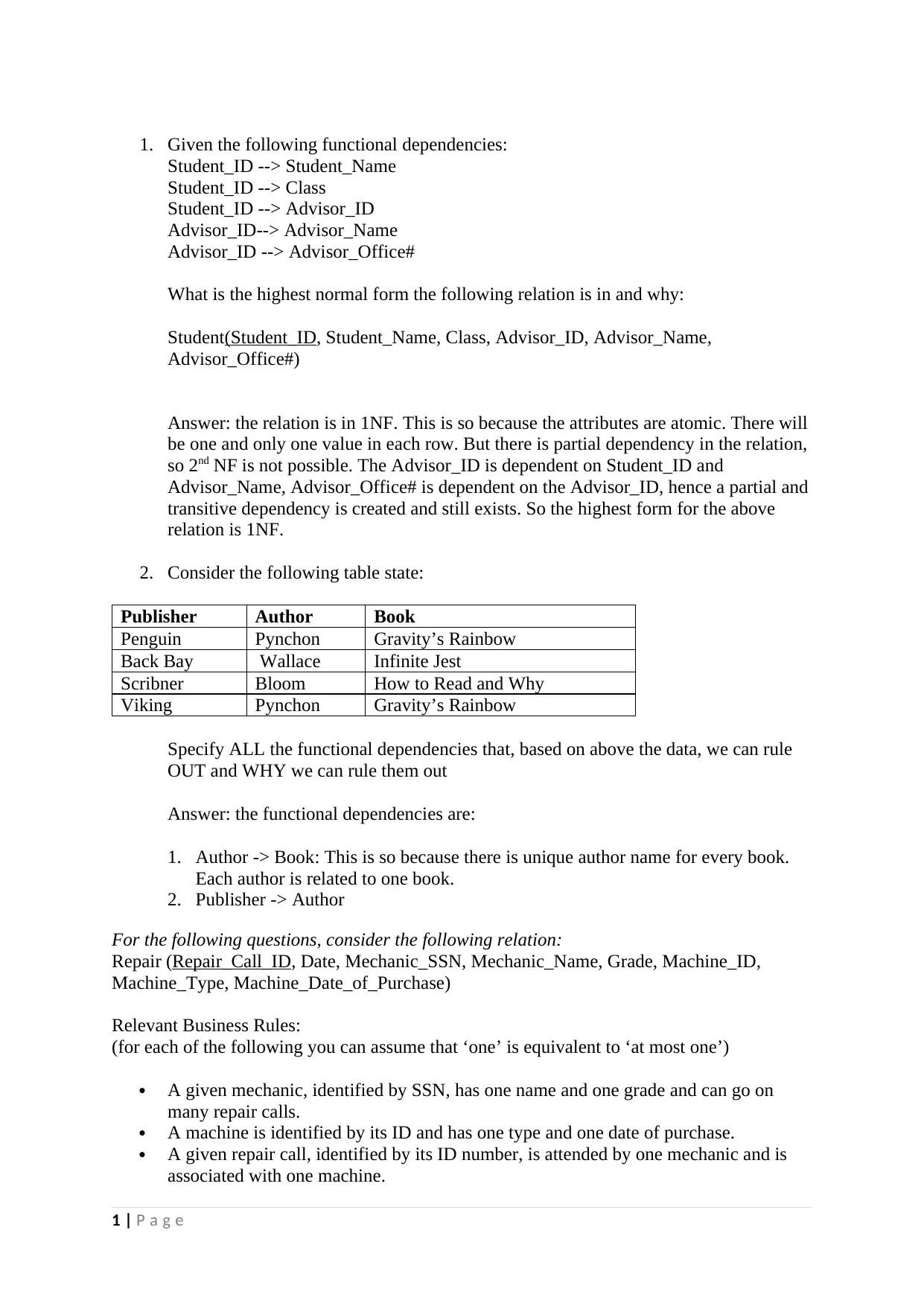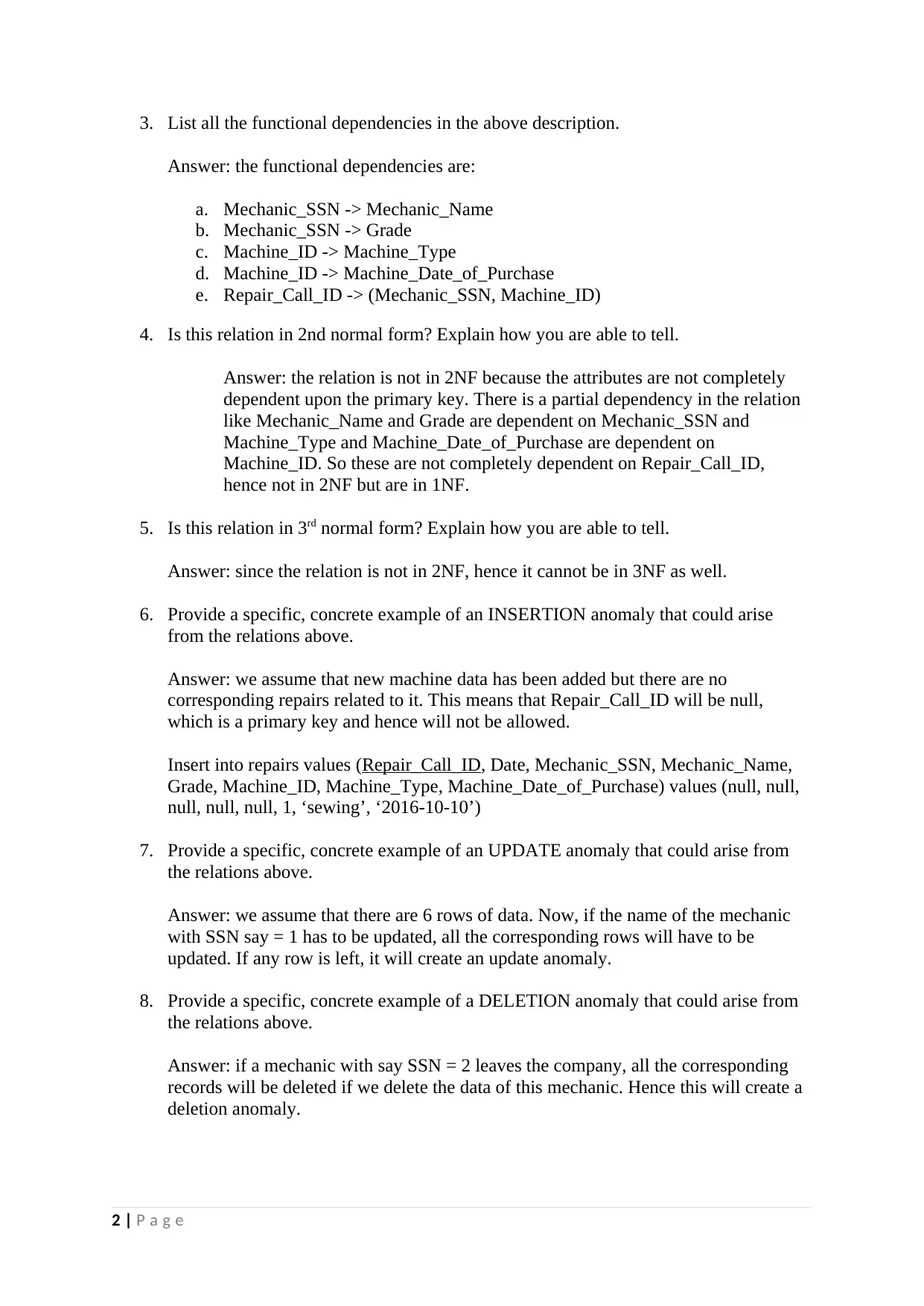Normalization Homework
VerifiedAdded on 2019/09/26
|3
|755
|420
Homework Assignment
AI Summary
This homework assignment focuses on database normalization. It presents a series of problems related to identifying functional dependencies, determining the highest normal form of a given relation, and explaining anomalies (insertion, update, deletion). The assignment includes examples of relations and asks students to identify functional dependencies, determine the normal forms (1NF, 2NF, 3NF), and provide concrete examples of anomalies that could arise. The provided solution details the answers to each question, explaining the reasoning behind the answers and providing specific examples to illustrate the concepts of normalization and anomalies in relational databases.
1 out of 3




![[object Object]](/_next/static/media/star-bottom.7253800d.svg)